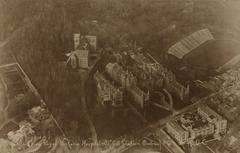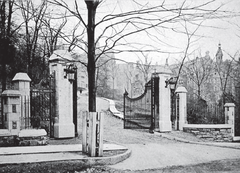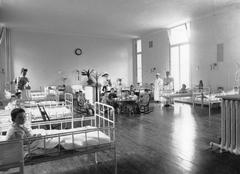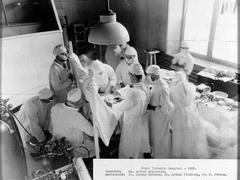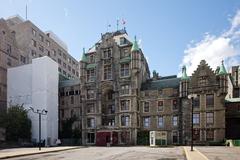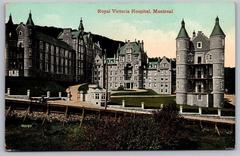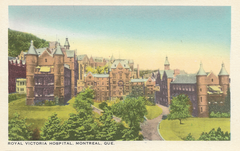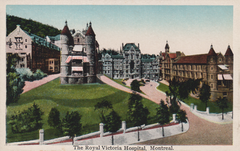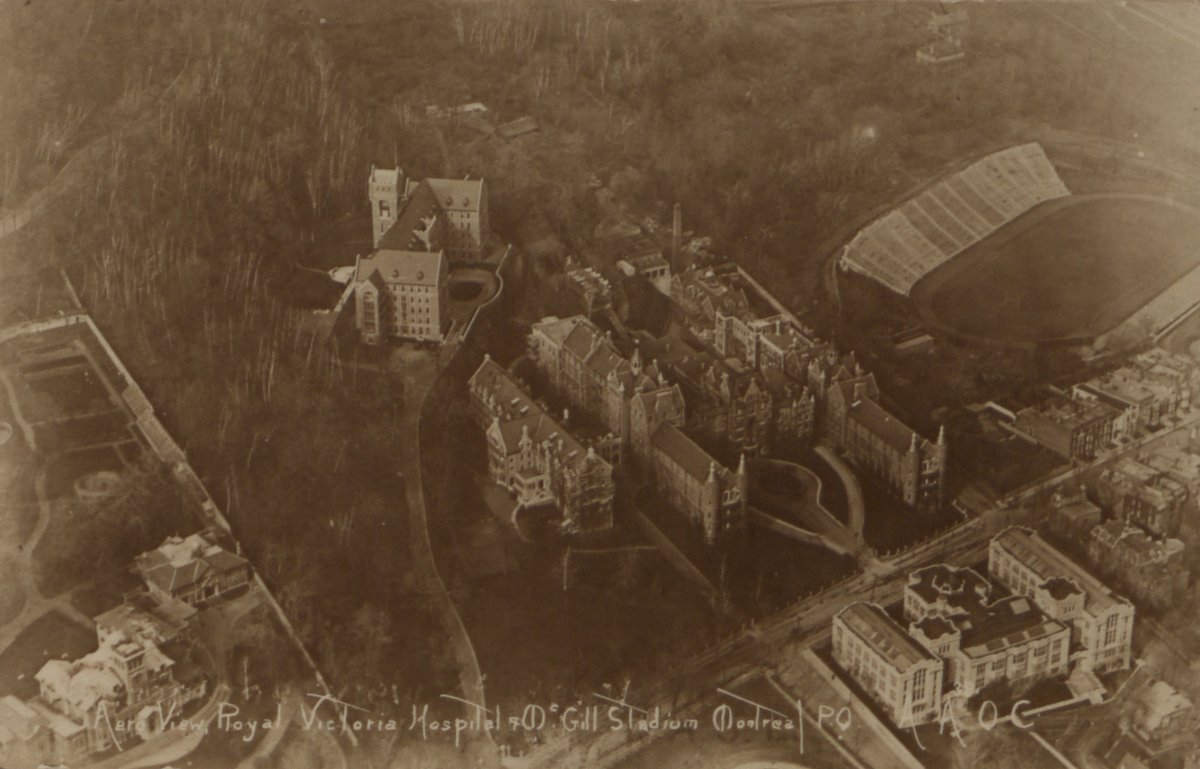
Royal Victoria Hospital Montreal: Visiting Hours, Tickets & Historical Significance Guide
Date: 14/06/2025
Introduction
The Royal Victoria Hospital (RVH) in Montreal stands as a testament to the city’s medical, architectural, and social history. Established in 1893 on land donated by Lords Strathcona and Mount Stephen, the hospital’s iconic Scottish baronial design and partnership with McGill University made it a beacon of medical innovation and community service (McGill Archives; McGill 200 Years). Today, the RVH is celebrated not only for its healthcare legacy but also as a historic landmark undergoing a major transformation through the New Vic Project—an initiative that seeks to preserve its heritage while reimagining its future as an academic and public space (Heritage Montreal; CBC News).
This guide provides a detailed overview of the hospital’s historical significance, visitor information, accessibility, redevelopment, and nearby attractions—offering essential tips to enrich your visit. For those interested in architecture, history, or Montreal’s urban evolution, the Royal Victoria Hospital is a pivotal site to explore.
For deeper research or planning, consult resources like the McGill University Health Centre, McGill Archives, and the OCPM.
Table of Contents
- Founding and Early Development (1893–1920s)
- Architectural and Cultural Significance
- Medical Innovation and Education
- Expansion and Modernization
- The Royal Victoria Hospital Site Today
- Visitor Information
- The New Vic Project and Redevelopment
- Frequently Asked Questions (FAQ)
- Conclusion and Further Resources
- Official Sources and Further Reading
Founding and Early Development (1893–1920s)
The Royal Victoria Hospital opened in 1893 on Mount Royal’s southern slope, built on land gifted in 1887 by philanthropists Lords Strathcona and Mount Stephen. Designed by H. Saxon Snell, its Scottish baronial style reflected the heritage of its founders and asserted the influence of the British Empire in Montreal (McGill Archives; McGill 200 Years).
From the outset, the RVH was affiliated with McGill University as a teaching hospital, fostering medical research, education, and care. The integration of the Montreal Maternity Hospital in the 1920s expanded its role, particularly in women’s health.
Architectural and Cultural Significance
The RVH’s imposing “castle on the hill” silhouette quickly became a Montreal landmark. Its pavilion-plan layout was innovative, emphasizing light, ventilation, and patient comfort—a model adopted in hospitals nationwide. The hospital was not just a center for medical care but also a social and civic hub, hosting charitable events and reflecting the city’s multicultural identity (McGill 200 Years; Mont Royal).
Medical Innovation and Education
RVH played a leading role in medical advancement, particularly through its partnership with McGill University. The creation of the Montreal Neurological Institute in 1934 cemented its reputation as a center for neurological research (McGill Archives). The hospital was also an early pioneer in inclusive care, aiming to serve “all Montrealers, regardless of social condition” (Mont Royal).
Expansion and Modernization
Throughout the 20th century, RVH expanded its services and facilities to meet the needs of a growing urban population. In 1997, it joined with other major hospitals to form the McGill University Health Centre (MUHC), ultimately moving its clinical services to the Glen site in 2015 (McGill 200 Years). The original Mount Royal buildings remain a symbol of Montreal’s medical and architectural history.
The Royal Victoria Hospital Site Today
Though no longer a functioning hospital, the original RVH site is a cherished landmark attracting visitors for its history, architecture, and panoramic views. Its future is being shaped by extensive public consultation and visionary redevelopment plans that prioritize heritage conservation and sustainable urban design (Heritage Montreal; OCPM).
Visitor Information
Location and Access
Original Site (Mount Royal):
687 Pine Avenue West, Montreal, QC.
Accessible via McGill and Peel metro stations, as well as multiple bus routes.
Glen Site (Current Hospital):
1001 Boulevard Décarie, Montreal, QC.
Served by Vendôme Metro (Orange Line), several bus routes, and nearby train lines (Moovit).
Visiting Hours and Ticket Information
- Mount Royal Site: Exterior grounds open daily from dawn to dusk. No admission fee or ticket required for outdoor access. Interior access is restricted to special events and guided tours.
- Glen Site: Hospital visiting hours are typically 7 a.m.–12 p.m. and 1 p.m.–5 p.m., Monday through Friday (hours may vary by department) (MUHC Visit). No ticket or fee required.
Guided Tours and Special Events
- Guided walking tours, heritage events, and virtual experiences are periodically offered at the Mount Royal site (OCPM Virtual Tour). Check local listings or the McGill Archives for up-to-date schedules.
- Special events may grant access to interior spaces and provide in-depth historical context.
Accessibility
- The grounds at the Mount Royal site are partially accessible, but the hillside terrain may be challenging for those with limited mobility.
- The Glen hospital site is fully wheelchair accessible, with elevators, ramps, handicap parking, and accessible washrooms (MUHC Visit).
Nearby Attractions
- Mount Royal Park: Adjacent to the hospital, with walking trails and city views.
- McGill University campus
- Montreal Museum of Fine Arts
- Golden Square Mile and downtown shopping/dining districts
Visitor Tips
- Wear comfortable shoes for exploring the grounds.
- Bring a camera for panoramic views, especially in autumn.
- Check for special tour dates and book in advance if required.
- Consult Moovit for transit updates.
The New Vic Project and Redevelopment
Vision and Heritage Conservation
The New Vic Project, spearheaded by McGill University and the Quebec government, will transform part of the original RVH site into a world-class academic and research hub focused on sustainability and public policy (CBC News). The project preserves historic pavilions while adding new, eco-friendly structures (ERA Architects).
Sustainability and Community Impact
Key features include green roofs, geothermal heating, extensive green spaces, and the adaptive reuse of heritage materials (Canada ConstructConnect). The redevelopment has been shaped by community consultation and aims to serve both academic and public interests.
The site also honors Indigenous land and history, integrating reconciliation into redevelopment plans (National Trust Canada).
Visiting During Redevelopment
- The site is currently an active construction zone. Public access is limited to scheduled guided tours and virtual visits (OCPM Virtual Tour).
- Tours are free but require registration.
- Accessibility and safety for visitors are prioritized in all new designs.
Frequently Asked Questions (FAQ)
Q: What are the Royal Victoria Hospital visiting hours?
A: Mount Royal site grounds are open daily from dawn to dusk. Interior access is only during special events or tours. Glen site hospital hours are generally 7 a.m.–12 p.m. and 1 p.m.–5 p.m., Monday to Friday (MUHC Visit).
Q: Do I need a ticket to visit?
A: No ticket is needed to access exterior grounds. Guided tours and special events may require advance registration.
Q: Is the site accessible for visitors with mobility challenges?
A: Glen site is fully accessible. Mount Royal site grounds have uneven terrain; accessible pathways are being added as part of redevelopment.
Q: Are guided tours available?
A: Yes, periodically, especially during heritage events. Check OCPM and McGill Archives for schedules.
Q: Can I take photographs?
A: Photography is allowed outdoors and during tours. Always respect privacy and posted guidelines.
Conclusion and Further Resources
The Royal Victoria Hospital is a cornerstone of Montreal’s history, embodying architectural splendor, medical achievement, and a commitment to social progress. As the site undergoes a visionary transformation, it remains open—albeit in limited capacity—for visitors eager to connect with its storied past and promising future.
For the latest on visiting hours, special events, and redevelopment progress, download the Audiala app for guided audio tours and interactive maps. Stay connected by following official channels and exploring related articles on Montreal’s heritage.
Official Sources and Further Reading
- McGill Archives
- McGill 200 Years
- Mont Royal
- National Trust Canada
- MTL Blog
- Canada’s History
- CBC News
- ERA Architects
- Canada ConstructConnect
- OCPM Virtual Tour
- Haunted Montreal
- MUHC Parking
- MUHC Patient Education
- MUHC Visit
- Moovit
